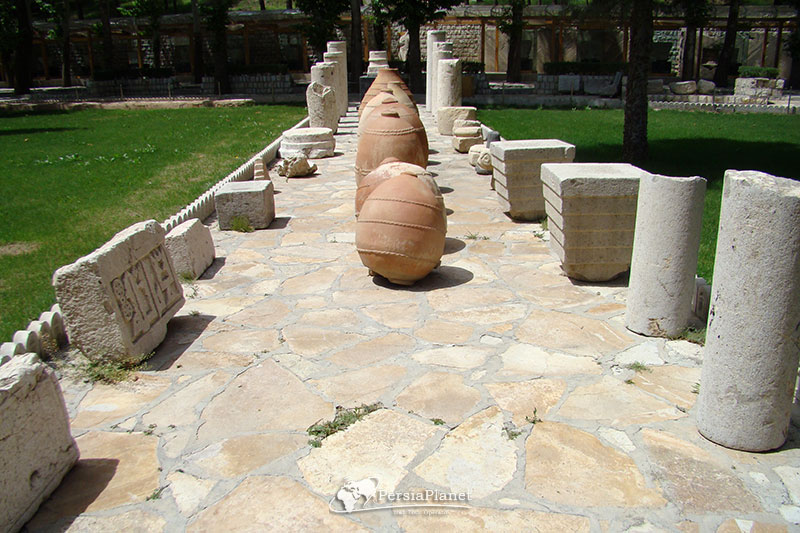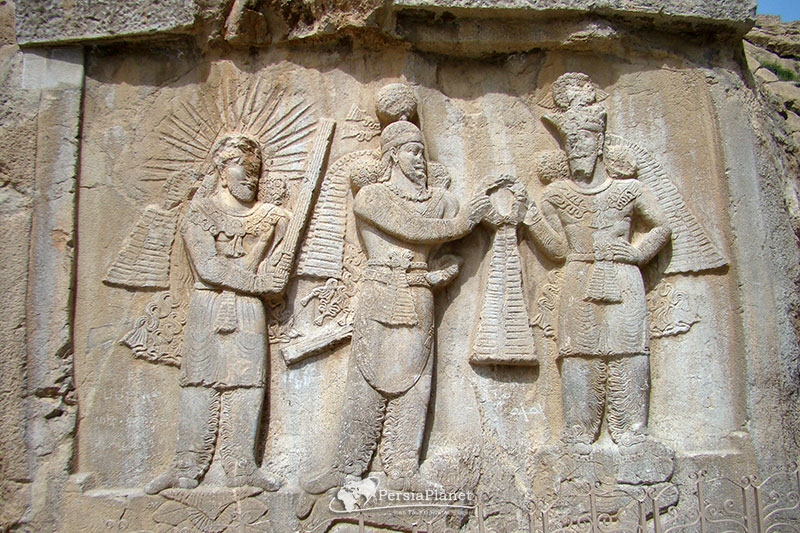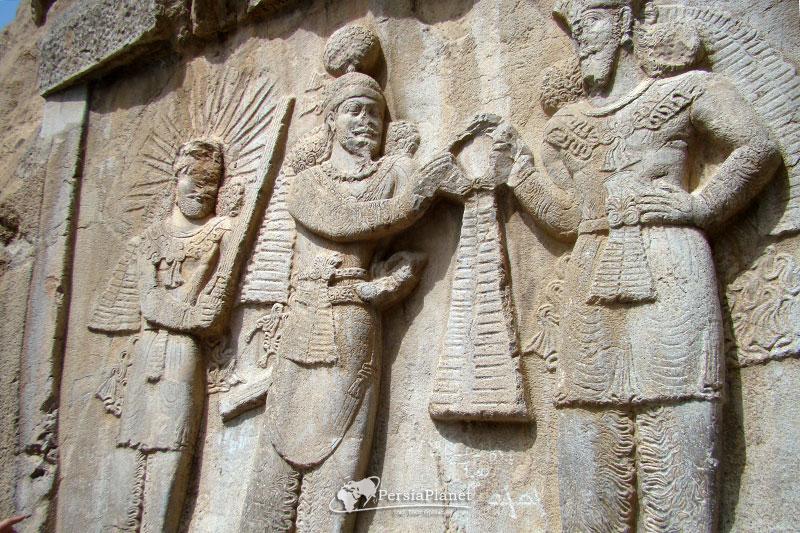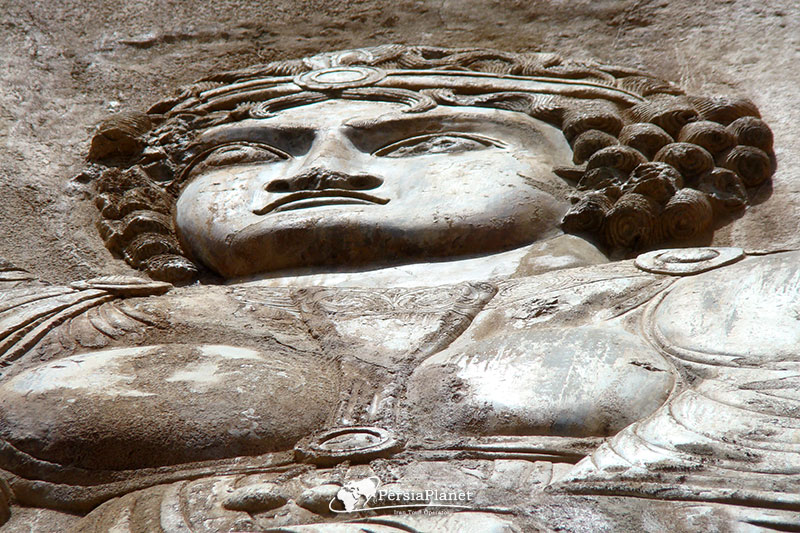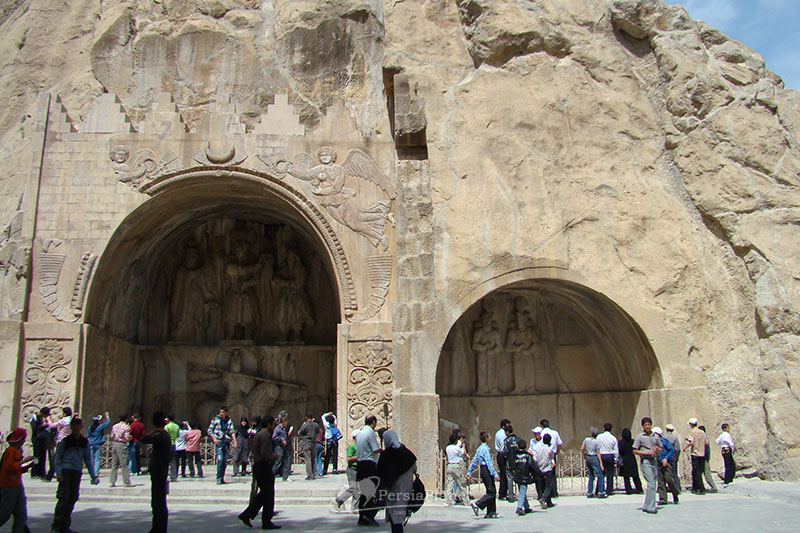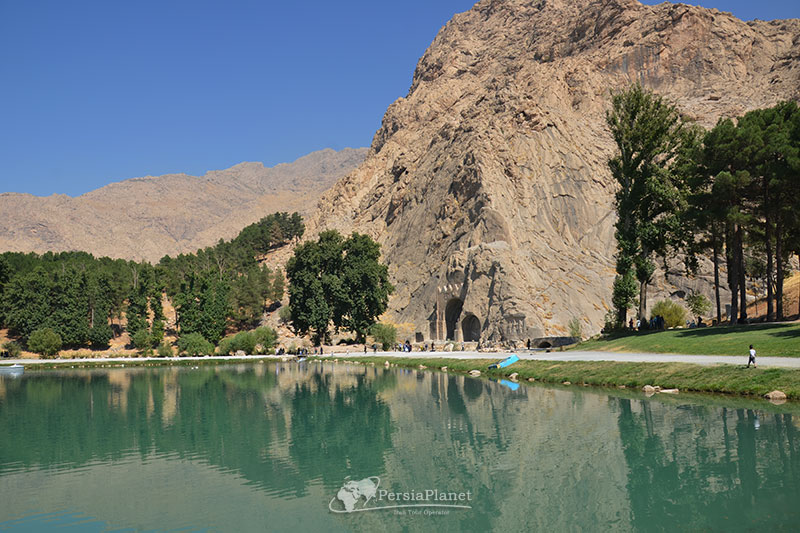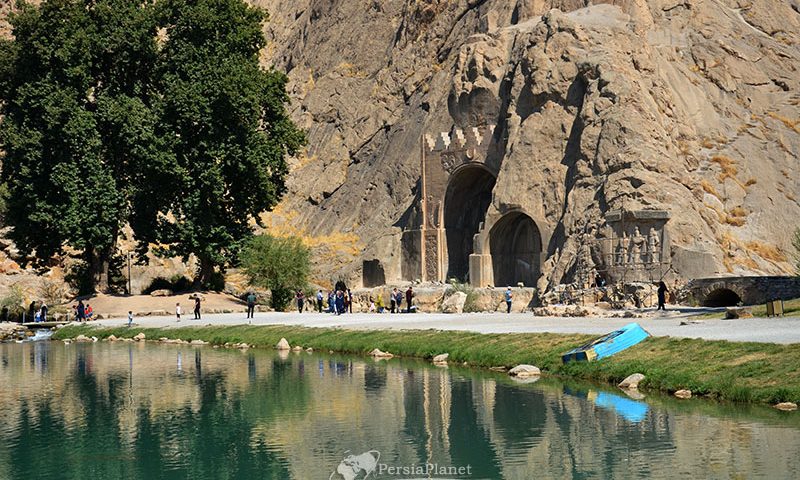Taq-e Bostan, Tagh Bustan

Shushtar Historical Hydraulic System
August 12, 2021
Bisotun (Biston, Behistun, Bistoon)
August 14, 2021Throughout history, kings have sought to use art to display and perpetuate their glory not only for their people but also for the future. One of the ways to show the power and greatness of kings was to carve on rocks, mountains and create reliefs of important events of the time. They asked the artists to carve events such as the coronation, the victory over the enemies on the top of the mountain and on the rock so that anyone passing by could see it.
In the past, Taq Bostan was the name of a village 9 km from Kermanshah. With the passage of time and urban development, this village was located in the city, which is currently located in the northeast of Kermanshah. This collection of motifs is located on the slopes of a mountain and next to a lake known as Tagh Bostan Lake. In the past, this place, with its pleasant climate and nature, was a place for recreation and hunting of Sassanid kings, and carved maps also show this.
The meaning of Taq-e Bostan
Tourists, historians and geographers of the Islamic period have mentioned this area with different names. Ibn Faqih and Ibn Rasta have called this place “Shabdiz”, Yaqut Hamavi has called it “Qasr Shirin”, Hamdollah Mostofi has called it “Taq-e Bastam” and some others have called it “Taq-e Bahastoon”, “Taq-e Bistoon” and “Takht-e Bostan”. The locals also know this area as “Taq Wasan” and “Taq Busan”.
Today, this embossed collection is also known as Taq-e Bostan, which is pronounced in the Kermanshah or Kurdish dialect, “Taq Wa San”. In fact, “Taq” means “arch” and “Wa” means “from” and “san” means “stone”. Therefore, Taq Wa San means an arch made of stone.
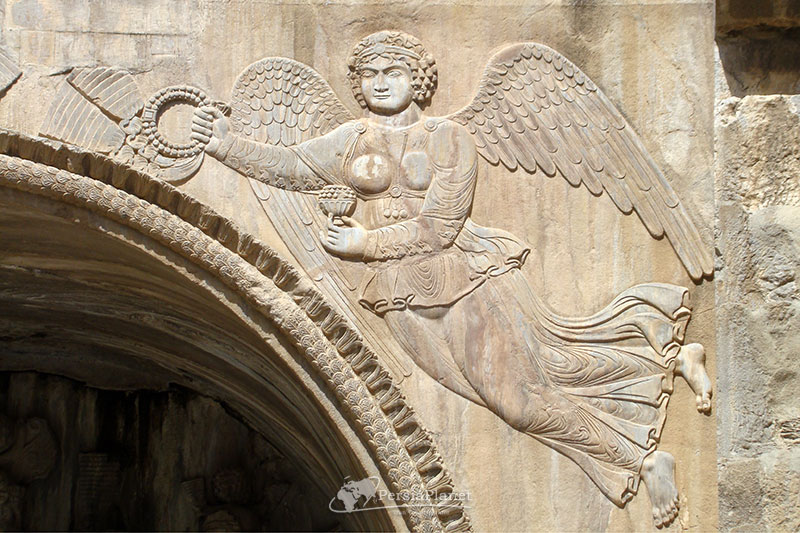
History of Taq-e Bostan
The Sassanid kings considered the historical complex of Persepolis as the first place to carve statues during their reign. But after the reign of Ardeshir II (Sassanid king from 379 to 383 AD), by his order and after reaching the kingdom, Bostan Arch was chosen from other regions of Iran and considered this place as the best place to create inscriptions of his kingdom.
Perhaps the most important reason for this is its geographical location between the Silk Road (an important trade route in Asia that connects West, East and South Asia to each other and Eastern Europe to North Africa). It has pristine and beautiful nature. There are beautiful springs in this area, which has refreshing water and has given a double beauty to its surroundings. Of course, there were other buildings in this area that no longer exist. Here, the remains of a bridge on the east side of the relief of Ardeshir can be seen. A lithograph has also been discovered in recent years above the spring of Taqeh Bostan. There are many opinions about the history of this magnificent historical collection, each of which is interesting and audible in its own way; Masoudi’s book mentions the carvings in Taqa Bostan as one of the most amazing works of history and believes that this region of the country was used as the gardens of Sassanid kings about 13 centuries ago.
Arthur Christensen also considered the Bostan arch complex as the shrine of Anahita and believes that the first Sassanid kings, up to Narsi (grandson of Yazdgerd III and one of the Sassanid kings), carved their images on the rocks and huge stones around the Persepolis complex. Some archaeologists and historians have estimated the antiquity of this collection, which consists of several inscriptions (stone inscriptions), to the reign of the Sassanid kings, which dates back to the third century AD.
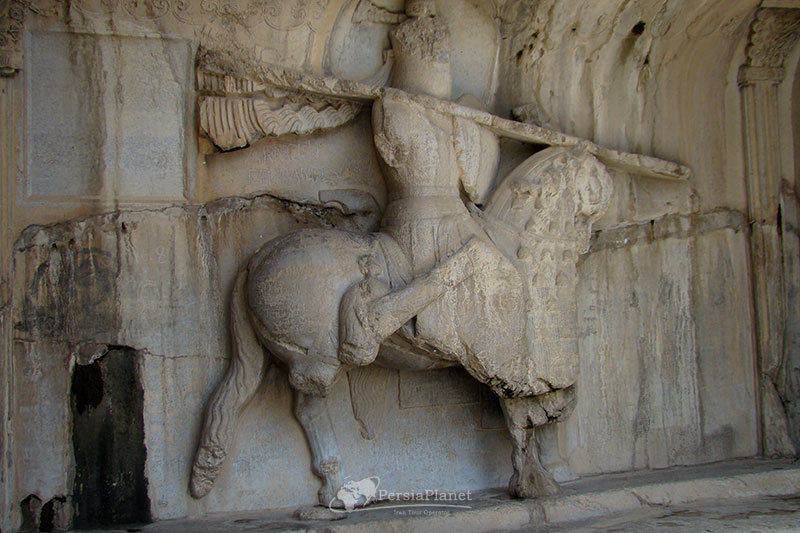
The importance of Taq-e Bostan
Taq Bostan is one of the most important sights in Kermanshah province, which is of great artistic and historical importance to historians and archaeologists, and its splendor can be seen in the art used by men in ancient Iran. The Garden Arch unveils several historical events of the Sassanid era and depicts the coronation of the kings of this period, which are mentioned below:
Coronation of Ardashir II
Coronation of Shapur II
Coronation of Shapur III
Coronation of Khosro Parviz
Stone inscriptions in Pahlavi script
Reliefs and inscriptions of Taq Bostan
Taq Bostan consists of two interconnected arches and is made of gray raw stone that has been dug in the mountain. In fact, one of the obvious advantages and characteristics of these stones is the lack of growth of plants and weeds in it. This collection consists of three main and important parts that can be considered as the most accurate and at the same time the most beautiful stone works left from the Sassanid rule. These 3 sections are:
- “Inscription of the coronation of Ardashir II” related to the years 380-383 AD
- The “Great Arch” known as the Great Porch, which belongs to the reign of Khosro Parviz and in the years 590-628 AD
- The “small arch” known as the small porch, which is related to the prominent image of Shapur III in the years 380-383 AD.
All the images and motifs engraved on the inscriptions and stones in the Taq Bostan collection have been made with the elegance, precision and mastery of the artists in such a way that even the smallest details can be seen in them. Also in this collection, pictures of musicians in the Sassanid era are engraved and painting and music are valued as a valuable and artistic work.
Bostan Arch, known as the hunting ground of Persian kings, is the first lithograph in the world that correctly incorporates the rules and principles of painting. The image of Khosro Parviz riding on Shabdiz (Khosrow Parviz’s black horse) is engraved in this lithograph as if you are looking at a beautiful and praiseworthy painting.
The artist engraving the image of the rider has designed a dress for him, which is woven with golden threads and geometric rhombus. In fact, it can be said that he decorated the rider’s clothes in a very elaborate way. We can also refer to the hunting scene of the Shah’s boar, in which the Shah used a dress whose fabric is beautifully decorated with the image of Simorgh in circular signs. You can also see dramatic motifs in the images of the rowers.
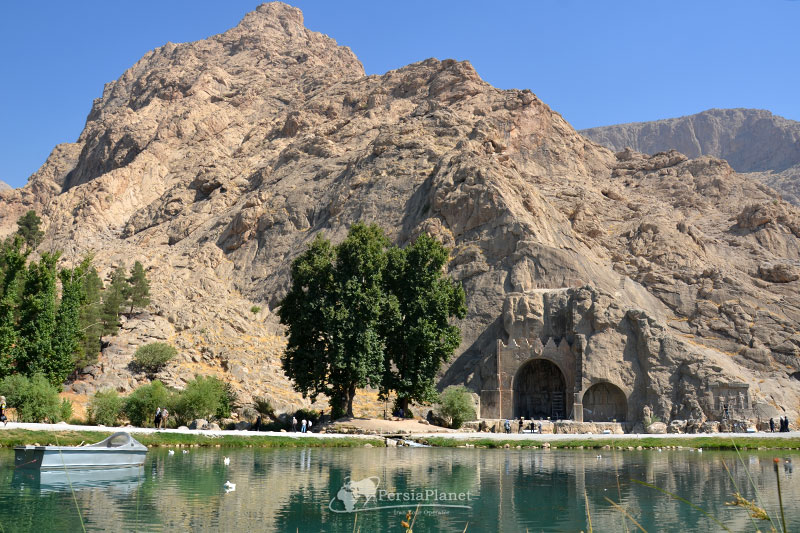
Visiting time of Taq Bostan
Visiting hours: the first six months of the year from 8:30 AM to 7:30 PM and the second half of the year from 8:30 AM to 5 PM
Holidays: Tasua and Ashura mourning days, the death of Hazrat Mohammad, Imam Reza, Hazrat Fatemeh and June 4 and 5
Religious holidays are based on the Arabic calendar and change every year according to the normal calendar.
The best time to visit Taq Bostan
The province has hot summers and cold winters. For this reason, if you plan to travel to this province, the best time to visit Kermanshah province is spring and autumn.
Mehdi Gholami.
